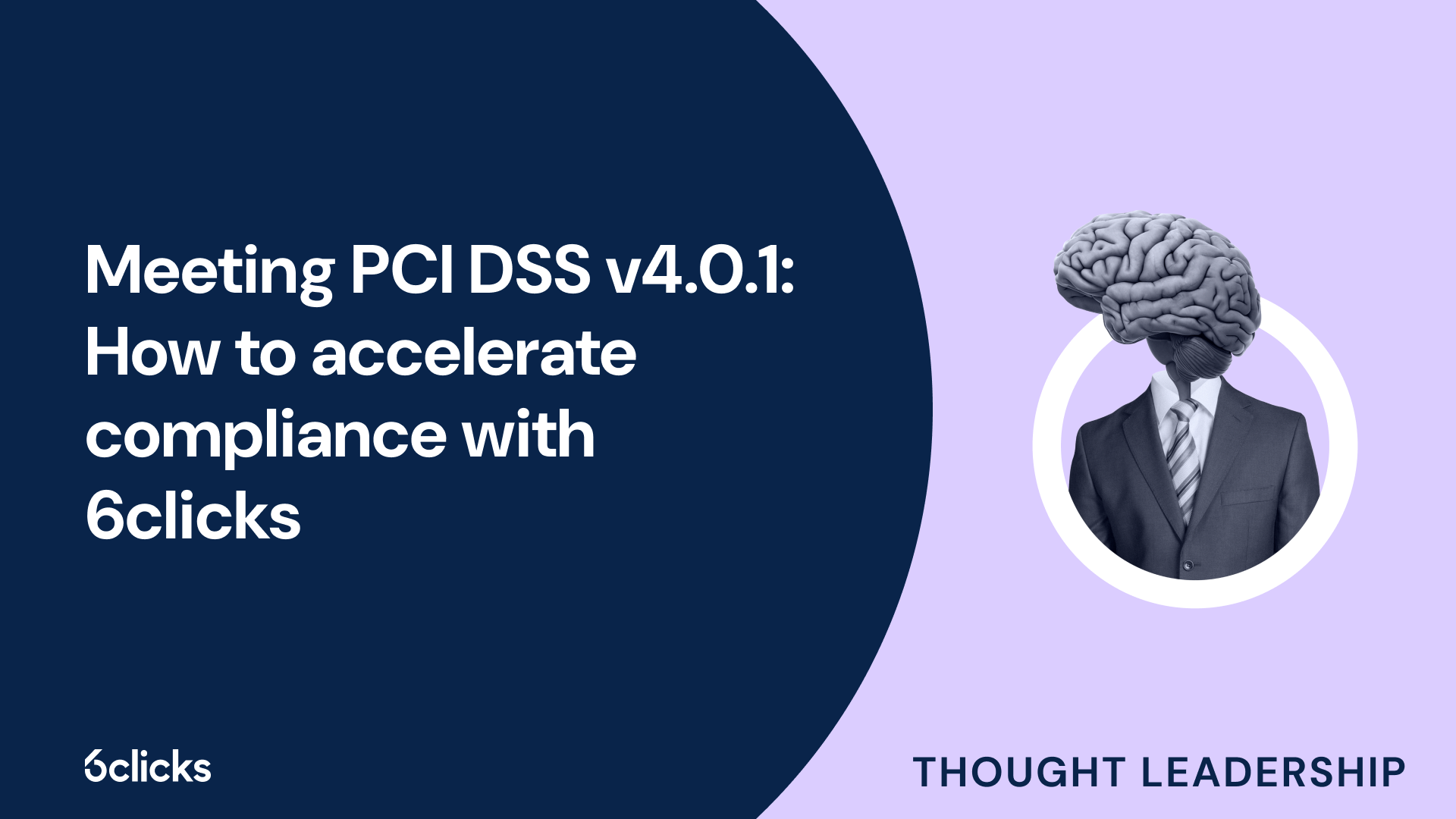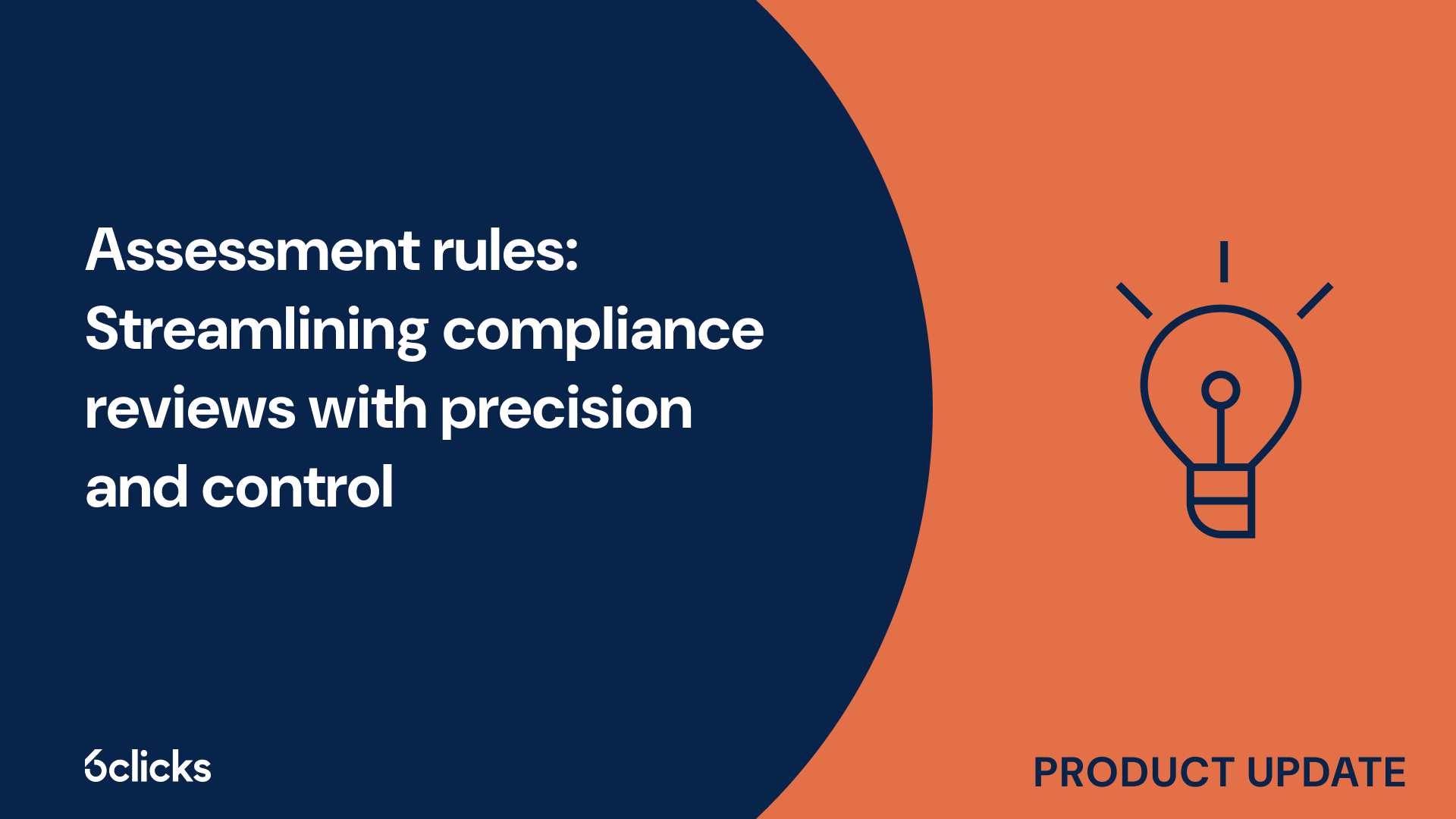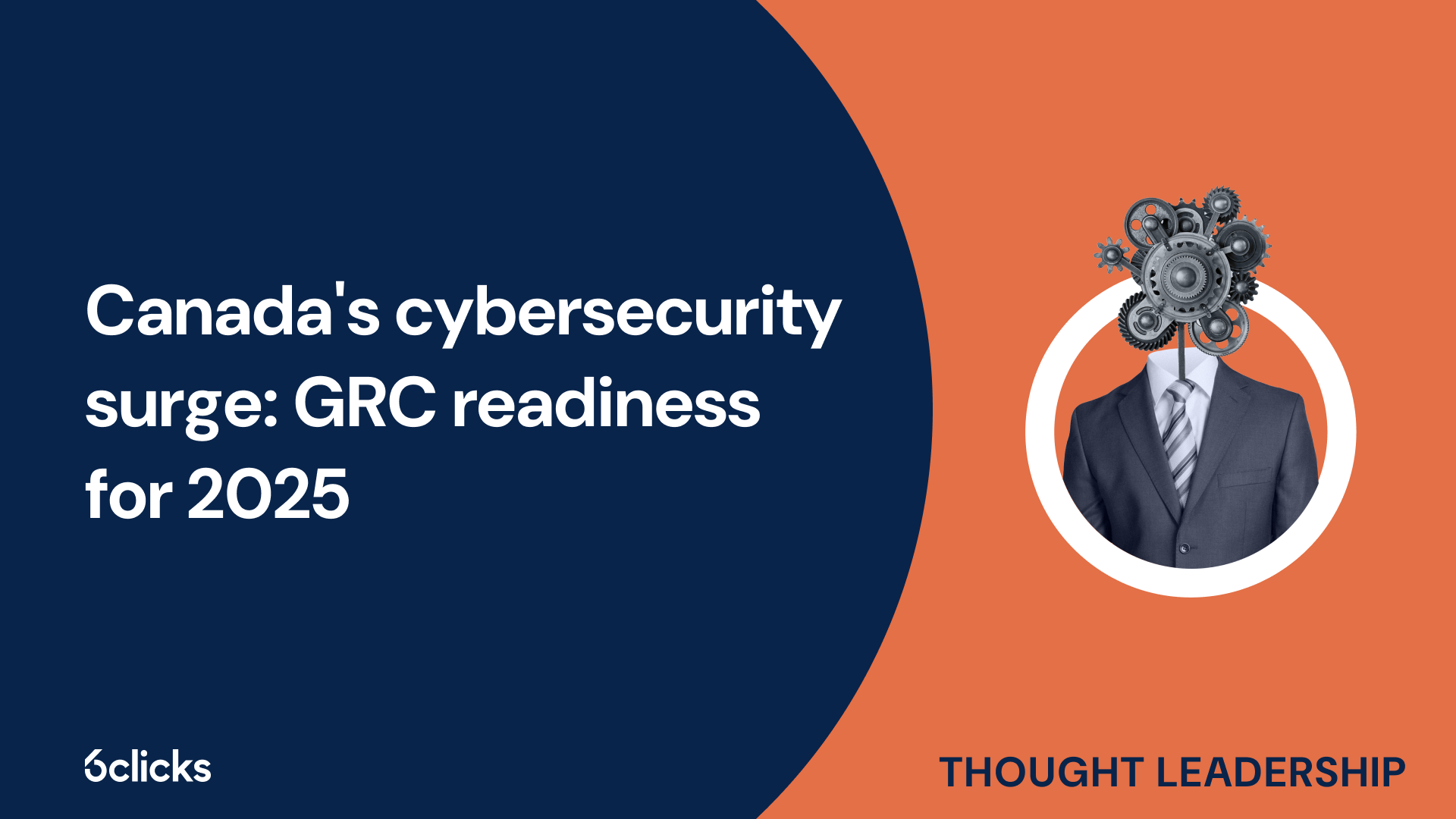Cyber resilience in 2025: Your smart guide to NIST CSF
Boost your organization's cyber resilience with this expert guide to the NIST Cybersecurity Framework. Learn to assess risk, improve security posture, and automate compliance with AI-powered tools.
-1.png?width=200&height=249&name=Group%20193%20(1)-1.png)
Cyber resilience in 2025: Your smart guide to NIST CSF
What is NIST SP?
NIST SP, also known as the National Institute of Standards and Technology Special Publication, is a series of publications developed by the National Institute of Standards and Technology (NIST) in the United States. These publications provide detailed guidance and recommendations on a wide range of topics related to cybersecurity and information security. NIST SP documents are widely recognized and adopted by federal agencies, government contractors, and private organizations as the authoritative source for best practices in securing information and information systems. The publications cover a variety of crucial cybersecurity areas, including risk management, security controls, access control, incident response, and many more. In essence, NIST SP serves as a valuable resource to help organizations strengthen their security posture and align with industry standards and best practices.
What does NIST SP stand for?
NIST SP stands for National Institute of Standards and Technology Special Publication. It is a series of documents that provide guidance on information security controls for federal agencies and organizations. NIST SP plays a crucial role in enhancing the security posture of federal information systems.
The significance of NIST SP lies in its role in improving compliance with security regulations and standards. By following the guidelines outlined in NIST SP, federal agencies can ensure that their security practices align with the requirements set by the government. This helps in maintaining a standardized level of security across federal organizations.
Another benefit of NIST SP is the increased cybersecurity awareness levels it promotes. The publication helps organizations understand the current threats and risks associated with information security. This awareness enables them to take proactive measures to protect their systems and data from cyber attacks.
NIST SP also enhances risk management programs by providing a comprehensive framework for assessing and mitigating risks. The guidelines offered in these publications help organizations establish an effective risk management strategy and implement appropriate security measures to address potential vulnerabilities.
Furthermore, NIST SP assists in improving access control measures. It provides guidance on identifying and implementing the necessary controls to prevent unauthorized access to sensitive information. This helps in safeguarding government systems and protecting them from insider threats.
Benefits of NIST SP
NIST SP, also known as the National Institute of Standards and Technology Special Publication, offers numerous benefits to federal agencies and organizations. By adhering to its guidelines, these entities can improve compliance with security regulations and standards, ensuring a standardized level of security across the federal sector. Additionally, NIST SP promotes increased cybersecurity awareness by helping organizations understand current threats and risks. It also enhances risk management programs by providing a comprehensive framework for assessing and mitigating risks. Furthermore, NIST SP assists in improving access control measures, helping safeguard government systems and protecting them from insider threats. Overall, NIST SP plays a crucial role in strengthening security practices and protecting sensitive government information.
Strengthened security posture
Strengthened Security Posture in Federal Information Systems with NIST SP
NIST SP (National Institute of Standards and Technology Special Publication) plays a crucial role in enhancing the security posture of federal information systems. By providing comprehensive guidelines and standards, NIST SP ensures that federal agencies adopt robust security controls to protect sensitive government data.
Implementing NIST SP controls, such as Personnel Security (PS) and Security Assessment and Authorization (CA), is of paramount importance. PS involves measures to ensure that individuals with access to federal information systems are trustworthy and competent. This control helps mitigate the risk of insider threats and unauthorized access by focusing on personnel screening, training, and awareness.
Security Assessment and Authorization (CA) is another key control that facilitates an ongoing information security partnership among federal agencies, government contractors, and other stakeholders. Implementing CA processes enables the identification and management of security risks, ensuring that systems operate within predefined security boundaries.
The impact of these controls extends to risk management, continuous monitoring, and system interconnections. By adhering to NIST SP controls, federal organizations can establish a robust risk management strategy based on a catalog of controls, cybersecurity frameworks, and industry standards. These controls provide a robust framework for continuous monitoring, ensuring that any security vulnerabilities or potential cyber threats are promptly identified and addressed.
Furthermore, when federal information systems connect with each other, be it within the government or with private organizations or cloud service providers, NIST SP controls ensure that proper security measures and best practices are implemented. This strengthens system interconnections and enhances the overall security posture of sensitive government data.
Improved compliance with regulations
Improved compliance with regulations is achieved through the implementation of the NIST 800-53 framework. This framework, developed by the National Institute of Standards and Technology (NIST), provides comprehensive security controls and guidelines for U.S. federal government agencies and contractors to protect critical data.
By adhering to the NIST 800-53 framework, federal agencies and contractors ensure that their information systems meet the rigorous security requirements set by federal regulations. The framework covers various security control families, including access control, personnel security, risk management, and incident response, among others.
U.S. federal government agencies and contractors utilize the NIST 800-53 framework to establish and maintain a robust security posture. It helps them identify and assess security risks, implement appropriate security controls, and monitor and evaluate their effectiveness. By following the framework, they can protect critical data from cyber threats, insider attacks, and other security vulnerabilities.
It is important for federal agencies and contractors to be compliant with NIST security standards and guidelines. They are required to achieve compliance within one year of publication and upon the deployment of information systems that are under development. This ensures that newly developed systems are designed and implemented with security in mind, reducing the potential for breaches and data compromise.
Increased cybersecurity awareness levels
Increased cybersecurity awareness levels play a crucial role in mitigating the risks associated with cyber threats and protecting sensitive data and systems. One significant contributor to enhancing knowledge and understanding in this field is the National Institute of Standards and Technology (NIST) Special Publications (SP).
NIST SP publications provide comprehensive guidelines and best practices that organizations and individuals can follow to improve their cybersecurity posture. These publications cover various aspects of cybersecurity, including risk assessment, vulnerability management, incident response, and secure system configurations.
By promoting awareness and understanding of cybersecurity risks and best practices, NIST SP publications assist organizations in implementing effective security measures and staying updated with the evolving threat landscape. They serve as a valuable resource for federal agencies, government contractors, and private organizations across different sectors.
Through the dissemination of NIST SP publications, organizations gain insights into emerging cybersecurity challenges, learn about the latest industry standards and frameworks, and acquire techniques to enhance their security posture. This increased cybersecurity awareness contributes to building a culture of cybersecurity and empowers individuals and organizations to proactively protect their sensitive data and systems.
Enhanced risk management programs
Enhanced risk management programs play a crucial role in helping organizations identify and mitigate potential risks in their operations. These programs go beyond traditional risk management approaches by incorporating advanced technologies, comprehensive risk assessments, and proactive measures to ensure the security and reliability of sensitive information and systems.
By implementing an enhanced risk management program, organizations gain a deeper understanding of the potential risks they face. This includes not only external threats such as cyber attacks but also internal risks such as human error or insider threats. Through rigorous risk assessments, organizations can identify vulnerabilities and weaknesses in their processes, systems, and infrastructure.
Implementing effective risk management strategies is vital to protect sensitive information from unauthorized access, loss, or disruption. These strategies encompass a wide range of measures, including establishing robust access controls, regularly updating and patching systems, encrypting data, and implementing strong security policies and practices.
Furthermore, effective risk management strategies involve ongoing monitoring and evaluation of risks to ensure timely detection and response to emerging threats. Organizations can also prioritize risks based on their potential impact, allowing for efficient allocation of resources and proactive mitigation measures.
In today's rapidly evolving threat landscape, organizations must prioritize the implementation of enhanced risk management programs to safeguard their sensitive information and ensure the reliability of their systems. By identifying and mitigating potential risks, organizations can maintain the trust of their stakeholders, protect their reputation, and minimize financial or operational disruptions.
Improved access control measures
Improved access control measures are essential in reducing the risk of unauthorized access to systems, networks, and devices. The controls provided in the NIST 800-53 framework offer a comprehensive set of guidelines for implementing effective access control strategies.
One key measure is the implementation of strong authentication mechanisms, such as multi-factor authentication. This requires users to provide multiple pieces of evidence to verify their identity, making it significantly more difficult for unauthorized individuals to gain access to sensitive information.
Another important measure is the use of access control lists (ACLs) and permissions. ACLs allow organizations to control who can access certain resources or perform specific actions. By carefully defining and managing these permissions, organizations can ensure that only authorized individuals can access critical systems and data.
Additionally, implementing strict password policies can help mitigate the risk of unauthorized access. This includes requiring users to use strong passwords that are regularly changed, enforcing password complexity requirements, and implementing mechanisms to prevent password reuse.
By following the access control measures outlined in the NIST 800-53 framework, organizations can significantly lower the risk of unauthorized access. These measures provide a layered approach to access control, ensuring that only authorized individuals can access sensitive systems and data.
Types of NIST special publications
NIST SP, which stands for National Institute of Standards and Technology Special Publication, is a series of documents that provide guidance and recommendations on various topics related to cybersecurity and information security. These publications are widely recognized and utilized by federal agencies, government contractors, and private organizations in the United States. They cover a wide range of subjects, including security controls, risk management strategies, access control, privacy controls, cybersecurity frameworks, and much more. The NIST SP series plays a crucial role in helping organizations establish and maintain robust cybersecurity practices, enabling them to protect sensitive government information, mitigate cyber threats, and enhance the overall security posture of their systems and networks. By following the guidelines and recommendations outlined in these publications, organizations can align their security measures with industry standards and best practices, ultimately contributing to a safer digital environment for both the government and private sectors.
NIST 800 Series: security and privacy controls for federal information systems and organizations
The NIST 800 Series is a collection of publications created by the National Institute of Standards and Technology (NIST) that provides guidance on security and privacy controls for federal information systems and organizations. These publications are widely recognized and followed by federal agencies and government contractors to protect their sensitive information and ensure compliance with federal laws and regulations.
The main purpose of the NIST 800 Series is to establish a comprehensive framework of security controls and privacy controls that can be tailored to address the specific needs and risks of federal information systems. These controls cover a wide range of areas such as access control, risk management, incident response, and configuration management.
The NIST 800 Series is crucial in facilitating compliance with federal laws and regulations because it provides a standardized set of security controls that federal organizations can implement. It also helps these organizations assess and manage the risks associated with their information systems, ensuring the confidentiality, integrity, and availability of sensitive government data.
Some of the key publications within the NIST 800 Series include NIST Special Publication (SP) 800-53, which provides a catalog of security controls, and NIST SP 800-37, which outlines the process of risk management framework for federal information systems. Additionally, there are the 8500 series, 8620 series, and 8800 series which address specific aspects of cybersecurity and privacy.
NIST 800-53: recommended security controls for federal Information systems and organizations
NIST Special Publication (SP) 800-53 is a key publication within the NIST 800 Series that focuses on recommending security controls for federal information systems and organizations. Its purpose is to provide a comprehensive and standardized set of security controls that federal agencies can use to protect their sensitive data and information systems from cyber threats.
The controls recommended in NIST SP 800-53 are categorized based on the level of security assigned to the objective. This categorization helps organizations prioritize their implementation efforts and allocate resources effectively. The controls are classified as low, moderate, or high, depending on the potential impact if a control is not implemented and the objectives are not met.
NIST SP 800-53 covers 18 different control families that address various aspects of information security. These control families include access control, audit and accountability, security assessment and authorization, configuration management, contingency planning, incident response, awareness and training, identification and authentication, media protection, physical and environmental protection, system and information integrity, and more.
By following the recommendations provided in NIST SP 800-53, federal organizations can establish a strong security posture, protect sensitive government information, and ensure the integrity and availability of their information systems. It also helps them comply with relevant laws, regulations, and policies pertaining to information security in the federal government.
NIST 800-37: guide for applying the risk management framework to federal information systems
NIST 800-37, also known as the "Guide for Applying the Risk Management Framework (RMF) to Federal Information Systems," plays a crucial role in ensuring control compliance and reducing the risk of hacks and compromises in federal information systems.
The purpose of NIST 800-37 is to provide federal agencies with a standardized approach to effectively manage the risks associated with information systems. It sets forth a comprehensive framework that federal agencies must follow to ensure the security and protection of their information assets.
By applying the risk management framework outlined in NIST 800-37, federal agencies can systematically identify potential risks, assess their impact, implement appropriate controls, and continuously monitor and evaluate the effectiveness of these controls. This process allows agencies to make informed decisions about the level of risk they are willing to accept and take the necessary steps to mitigate those risks.
The significance of NIST 800-37 lies in its ability to promote a proactive and systematic approach to cybersecurity within federal organizations. By following this framework, agencies can ensure that their information systems are designed, implemented, and operated with adequate security controls in place.
Furthermore, NIST 800-37 aligns with other cybersecurity efforts, such as the development of cybersecurity standards and guidelines by federal organizations and the adoption of industry best practices. It helps establish a consistent and coordinated approach to managing risk across federal information systems, ensuring a higher level of control compliance and reducing the likelihood of successful cyber attacks.
NIST 8500 series: cybersecurity practices for managing risk
The NIST 8500 series encompasses a set of publications that offer comprehensive guidance on cybersecurity practices for effectively managing and mitigating risk. These publications provide federal agencies and private organizations with valuable insights and best practices to enhance their cybersecurity posture.
The NIST 8500 series serves as a valuable resource for organizations by offering a framework to assess and manage cybersecurity risks. It provides guidance on identifying potential threats, evaluating the impact of those threats, and implementing appropriate controls to mitigate risks.
By following the recommendations outlined in the NIST 8500 series, organizations can establish a proactive approach to cybersecurity. They can better understand their risk landscape and take the necessary steps to protect their systems, networks, and data assets.
The NIST 8500 series helps organizations develop a risk management strategy that aligns with industry standards and best practices. It promotes a systematic approach to managing risk, ensuring that organizations have adequate security measures and controls in place to safeguard against cyber threats.
NIST 8620 Series: cybersecurity architectures & frameworks
The NIST 8620 series encompasses a collection of guidelines and resources that specifically focus on cybersecurity architectures and frameworks. This series provides organizations with essential guidance and best practices to incorporate effective cybersecurity measures into the design and implementation of their systems.
By following the recommendations outlined in the NIST 8620 series, organizations can develop robust cybersecurity architectures that align with industry standards and best practices. These architectures are designed to provide a comprehensive approach for protecting critical assets and infrastructure from cyber threats.
The NIST 8620 series offers valuable insights and recommendations for organizations looking to strengthen their cybersecurity defenses. It emphasizes the importance of considering cybersecurity as an integral part of system design rather than an afterthought. This approach ensures that cybersecurity measures are implemented from the earliest stages of development, helping to minimize vulnerabilities and potential risks.
Furthermore, the NIST 8620 series provides clear guidelines for the selection and implementation of cybersecurity frameworks. This enables organizations to identify and adopt frameworks that align with their specific needs and requirements, ensuring that their cybersecurity efforts are both effective and efficient.
NIST 8800 series: guidelines on security & privacy in public cloud computing
The NIST 8800 series provides comprehensive guidelines on security and privacy in public cloud computing. These guidelines are designed to help organizations ensure the protection of sensitive data and maintain the confidentiality, integrity, and availability of their information in cloud environments.
By following the recommendations outlined in the NIST 8800 series, organizations can establish effective security and privacy controls for their data in the cloud. These guidelines cover various aspects of cloud computing, including risk management, compliance, data protection, access controls, incident response, and privacy considerations.
Implementing the NIST 8800 series guidelines is crucial for protecting sensitive information and mitigating cybersecurity risks in public cloud environments. With the increasing adoption of cloud services, organizations are transferring their data to third-party providers, making security and privacy concerns more prevalent. These guidelines provide a framework for evaluating and selecting secure cloud service providers, implementing appropriate security measures, and maintaining control and oversight of data in the cloud.
Organizations that adhere to the NIST 8800 series guidelines can confidently utilize public cloud computing while minimizing the potential risks associated with data breaches, unauthorized access, and privacy violations. By adopting these guidelines, organizations can ensure the security and privacy of their data and maintain compliance with regulatory requirements, ultimately building trust with their customers and stakeholders.







